Contact Details
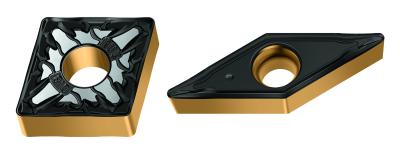
Walter unveils its new Tiger·Tec® Gold WKP01G and WPP05G grades that are tailored for maximum performance when turning high alloy-high tensile strength steels. The innovative turning inserts reduce machining time from 20% to 30%.
Walter specially developed the WKP01G for finishing high tensile steel and cast iron (ISO P01 and K01 workpiece groups) at the highest cutting speed. A very hard substrate provides the highest flank wear resistance, while the multiple-stage post-treatment process produces an extremely smooth rake face to significantly reduce friction and improve toughness. A sharp cutting edge with thinner CVD coating provides precise chip breaking for finishing operations.
The WPP05G grade is for medium and rough turning of steels at the maximum cutting speed. The substrate is made of a carbide with the highest hot hardness, making the insert suitable for both dry and wet-machining, and highest crater as well as flank wear resistance.
Both grades feature the Tiger·Tec® Gold coating technology. The multiple-layer medium-temperature titanium carbo-nitride (MT-TiCN) coating improves the elastic property of the highly aligned crystals, which do not detach from the substrate like a conventional TiCN coating to offer more wear resistance. The coating increases toughness and resistance to the flank face. In addition, the coating on the WPP05G grade has a highly textured aluminum oxide (Al2O3) coating to minimize crater wear. On average, the coating increases tool life by up to 50%.
Both WKP01G and WPP05G grades are ideal for continuous cutting and occasional interrupted cuts in high tensile materials (approx. 280-410 HB or 130-200 ksi). Ideal applications include large-scale production of components for the automotive and energy industries, such as gearboxes, gears and rotor hubs, as well as forged shafts for general mechanical engineering and wheel sets for the rail industry.
Walter offers the new Tiger·Tec® Gold WKP01G and WPP05G grades in around 130 inserts with 11 different geometries.
Related Glossary Terms
- Brinell hardness number ( HB)
Brinell hardness number ( HB)
Number related to the applied load (usually, 500 kgf and 3,000 kgf) and to the surface area of the permanent impression made by a 10mm ball indenter. The Brinell hardness number is a calculated value of the applied load (kgf) divided by the surface area of the indentation (mm2). Therefore, the unit of measure of a Brinell hardness number is kgf/mm2, but it is always omitted.
- aluminum oxide
aluminum oxide
Aluminum oxide, also known as corundum, is used in grinding wheels. The chemical formula is Al2O3. Aluminum oxide is the base for ceramics, which are used in cutting tools for high-speed machining with light chip removal. Aluminum oxide is widely used as coating material applied to carbide substrates by chemical vapor deposition. Coated carbide inserts with Al2O3 layers withstand high cutting speeds, as well as abrasive and crater wear.
- chemical vapor deposition ( CVD)
chemical vapor deposition ( CVD)
High-temperature (1,000° C or higher), atmosphere-controlled process in which a chemical reaction is induced for the purpose of depositing a coating 2µm to 12µm thick on a tool’s surface. See coated tools; PVD, physical vapor deposition.
- cutting speed
cutting speed
Tangential velocity on the surface of the tool or workpiece at the cutting interface. The formula for cutting speed (sfm) is tool diameter 5 0.26 5 spindle speed (rpm). The formula for feed per tooth (fpt) is table feed (ipm)/number of flutes/spindle speed (rpm). The formula for spindle speed (rpm) is cutting speed (sfm) 5 3.82/tool diameter. The formula for table feed (ipm) is feed per tooth (ftp) 5 number of tool flutes 5 spindle speed (rpm).
- flank wear
flank wear
Reduction in clearance on the tool’s flank caused by contact with the workpiece. Ultimately causes tool failure.
- hardness
hardness
Hardness is a measure of the resistance of a material to surface indentation or abrasion. There is no absolute scale for hardness. In order to express hardness quantitatively, each type of test has its own scale, which defines hardness. Indentation hardness obtained through static methods is measured by Brinell, Rockwell, Vickers and Knoop tests. Hardness without indentation is measured by a dynamic method, known as the Scleroscope test.
- rake
rake
Angle of inclination between the face of the cutting tool and the workpiece. If the face of the tool lies in a plane through the axis of the workpiece, the tool is said to have a neutral, or zero, rake. If the inclination of the tool face makes the cutting edge more acute than when the rake angle is zero, the rake is positive. If the inclination of the tool face makes the cutting edge less acute or more blunt than when the rake angle is zero, the rake is negative.
- tensile strength
tensile strength
In tensile testing, the ratio of maximum load to original cross-sectional area. Also called ultimate strength. Compare with yield strength.
- titanium carbonitride ( TiCN)
titanium carbonitride ( TiCN)
Often used as a tool coating. See coated tools.
- turning
turning
Workpiece is held in a chuck, mounted on a face plate or secured between centers and rotated while a cutting tool, normally a single-point tool, is fed into it along its periphery or across its end or face. Takes the form of straight turning (cutting along the periphery of the workpiece); taper turning (creating a taper); step turning (turning different-size diameters on the same work); chamfering (beveling an edge or shoulder); facing (cutting on an end); turning threads (usually external but can be internal); roughing (high-volume metal removal); and finishing (final light cuts). Performed on lathes, turning centers, chucking machines, automatic screw machines and similar machines.
- wear resistance
wear resistance
Ability of the tool to withstand stresses that cause it to wear during cutting; an attribute linked to alloy composition, base material, thermal conditions, type of tooling and operation and other variables.

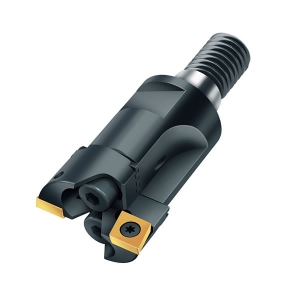

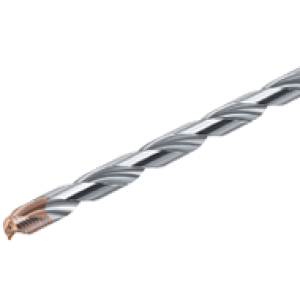

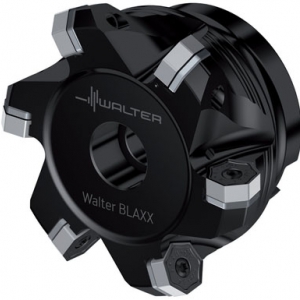

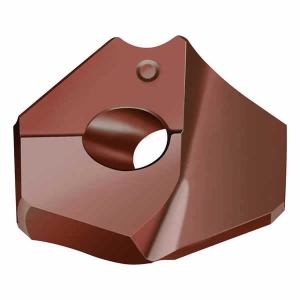

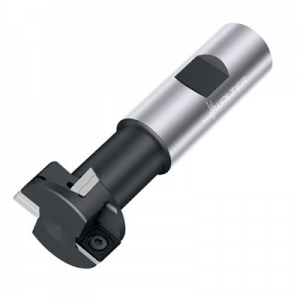
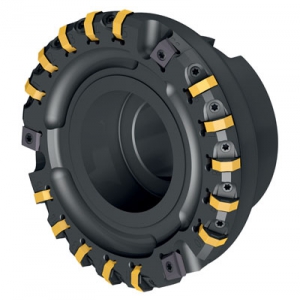
 PRODUCTS
PRODUCTS

